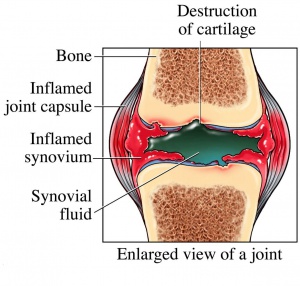User:Z5001524
Introduction
During pregnancy, the maternal bloodstream does not only contain maternal cells but also fetal cells. Therefore, the fetus will explose its DNA in the maternal blood and they are generally known as cell-free fetal DNA (cffDNA) [1]. Studies has suggested that there are around 2-6% of the cells in maternal blood are from the fetus itself [2]. These proportion of fetal cells include nucleated red blood cells, fetal trophoblast cells, mesenchymal stem cells and leucocytes and they will circulate through the maternal blood stream freely. The understanding of their functions in maternal blood is still limited but this free moving fetal DNA facilitate the diagnosis of different birth defects and abnormalities with a lower risk of miscarriage [1].
Origin and microchimerism
The fetal cells which contains fetal DNA are originated from trophoblast cells [3]. After implantation, the trophoblast cells will start to form the placenta. During this formation process, some trophoblast cells will undergo apoptosis and the DNA of the fetus will be fragmented. Eventually, they will be able to distribute and migrate into the maternal circulation through passing the intervillous space, which is filled with maternal blood [4]. This has explained the increase of the number fetal cells in maternal blood after implantation and presences of fetal cell can be detected starting from the 4 week of gestation [5]. However, the detection of fetal DNA in maternal blood in diagnosis is only reliable from 7 weeks of gestation [6]. The level of fetal cells and its DNA in the maternal blood increase with gestational age and rise for approximately 64 fetal genomes per ml of maternal bloodstream between first trimester and third trimester [7]. It will then reach it peak within last 8 weeks of gestation and decline after delivery [8].
More information on: Implantation| Placenta Development
Potential functions of fetal cells in the maternal blood
The functions of these cells that exist in maternal blood is still a mystery. However, it has been deduced that these cells would have contribution in tolerating maternal immune system and alter the immune system cells from attack the fetus.
Furthermore, the fetal cells in the bloodstream will also migrate to maternal organs such as lung and heart and the studies have found out the fetal cells and the placental cells have the ability to differentiate and repair the injured in both lungs and heart[9].
Fetal stem cells has also been deduced to have the function of alleviating rheumatoid arthritis and preventative effect on breast cancer [8]. Although these cells are found in tumors, there are no specific findings that explains whether its effect is preventing or restricting the growth of tumors [10].
More information on: Rheumatoid arthritis| Breast cancer| Fetal cells differentiation in heart
References
- ↑ 1.0 1.1 <pubmed>10472878</pubmed>
- ↑ <pubmed>9504651</pubmed>
- ↑ Nigam A, Saxena P, Prakash A & Acharya AS. (2012). Detection of fetal nucleic acid in maternal plasma: A novel noninvasive prenatal diagnostic technique. Journal of Internation Medical Sciences Academy, 25(3), 199.
- ↑ Smets, E. M. L., Visser, A., Go, A. T. J. I., van Vugt, J. M. G., & Oudejans, C. B. M. (2006). Novel biomarkers in preeclampsia. Clinica Chimica Acta, 364(1–2), 22-32. doi:http://dx.doi.org/10.1016/j.cca.2005.06.011
- ↑ Nigam A, Saxena P, Prakash A & Acharya AS. (2012). Detection of fetal nucleic acid in maternal plasma: A novel noninvasive prenatal diagnostic technique. Journal of Internation Medical Sciences Academy, 25(3), 199.
- ↑ Nigam A, Saxena P, Prakash A & Acharya AS. (2012). Detection of fetal nucleic acid in maternal plasma: A novel noninvasive prenatal diagnostic technique. Journal of Internation Medical Sciences Academy, 25(3), 199.
- ↑ Nigam A, Saxena P, Prakash A & Acharya AS. (2012). Detection of fetal nucleic acid in maternal plasma: A novel noninvasive prenatal diagnostic technique. Journal of Internation Medical Sciences Academy, 25(3), 199.
- ↑ 8.0 8.1 <pubmed>20663958</pubmed>
- ↑ <pubmed>22223204</pubmed>
- ↑ Society for the Study of Reproduction. (2012, June 6). Three types of fetal cells can migrate into maternal organs during pregnancy: Some mothers literally carry pieces of their children in their bodies. ScienceDaily. Retrieved July 20, 2014 from www.sciencedaily.com/releases/2012/06/120606155802.htm
